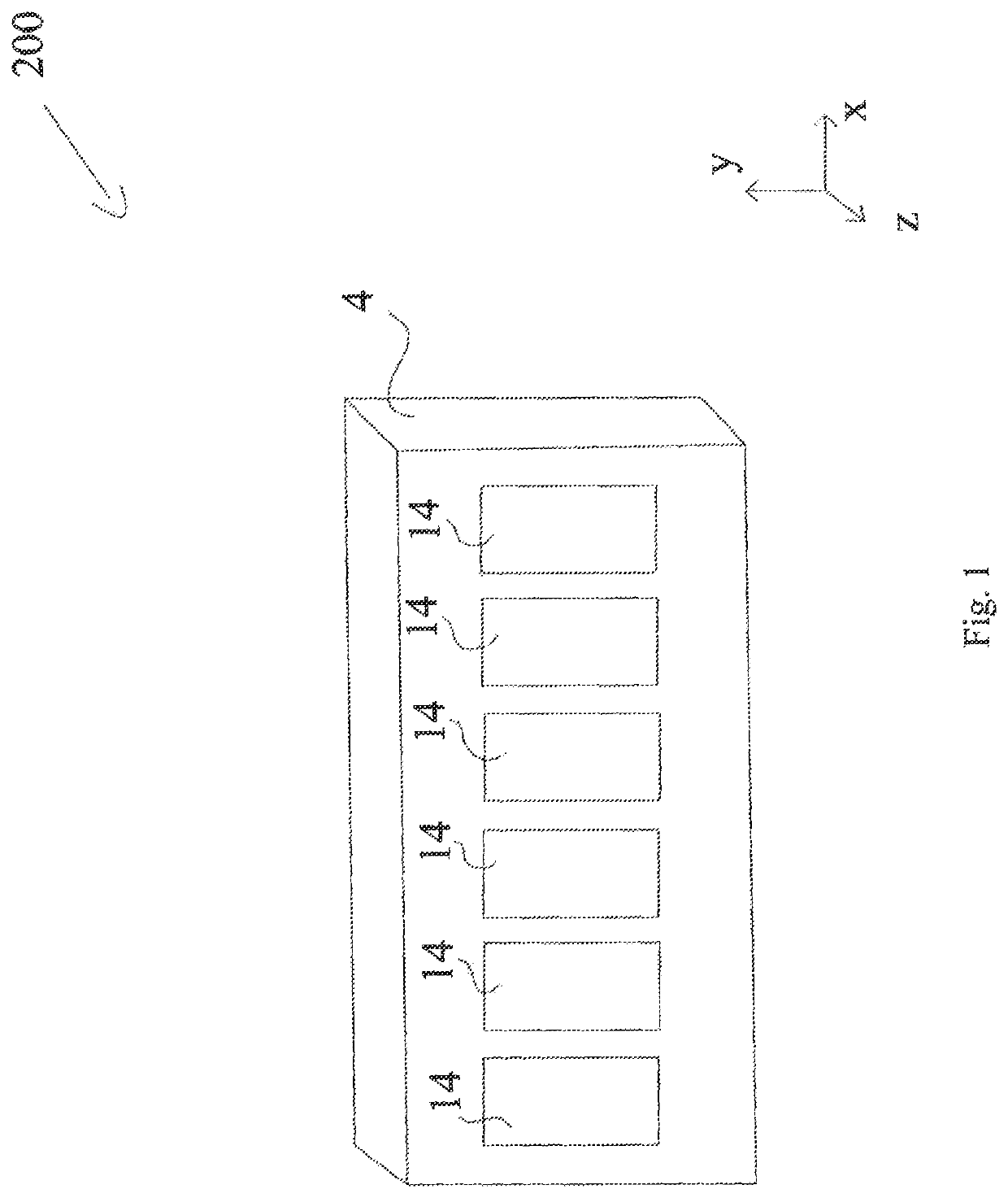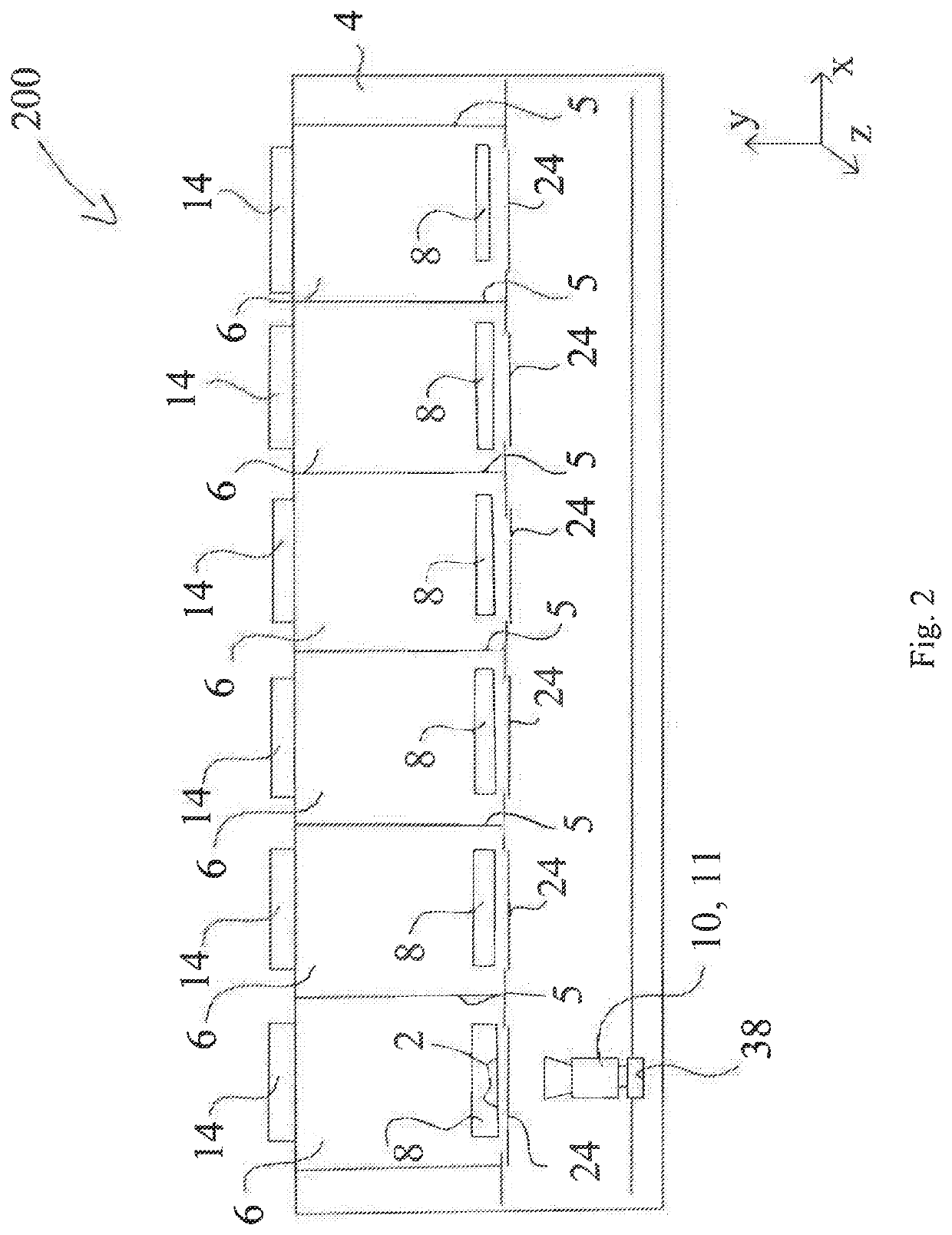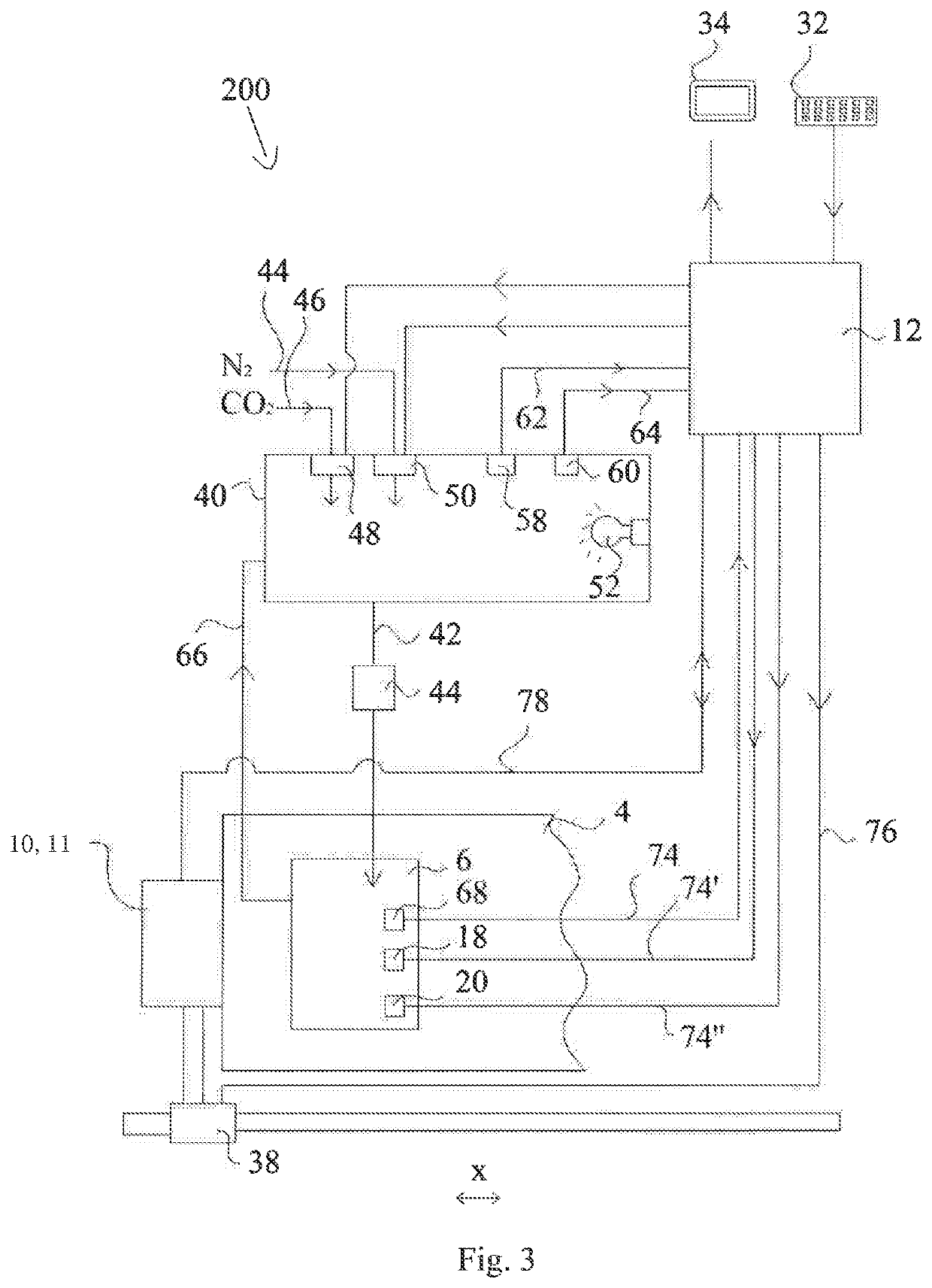Apparatus for the incubation of a biological material
a biological material and apparatus technology, applied in the field can solve the problems of low success rate of in vitro fertilization, difficult task of performing in vitro fertilization and egg incubation, and lack of reliable methods for selecting the highest quality embryos
- Summary
- Abstract
- Description
- Claims
- Application Information
AI Technical Summary
Benefits of technology
Problems solved by technology
Method used
Image
Examples
Embodiment Construction
[0079]The present invention relates in a first aspect to an apparatus for incubation of a viable biological material;
[0080]said apparatus comprises:
[0081]a housing having an extension in a longitudinal direction, in a transversal direction, and in a direction perpendicular to the longitudinal direction and the transversal direction; said housing comprising:
[0082]two or more culture dish compartments, each being adapted to accommodate, one or more culture dishes comprising a biological material;
[0083]wherein said apparatus comprises an image capturing device;
[0084]wherein said apparatus comprises control unit for controlling the operation thereof;
[0085]wherein at least part of said image capturing device is being configured to be movable in relation to the two or more culture dish compartments, thereby allowing capture of images of one or more of said biological materials accommodated in said one or more culture dishes; and
[0086]wherein said apparatus comprises a FLIM unit (fluoresce...
PUM
| Property | Measurement | Unit |
|---|---|---|
| wavelength | aaaaa | aaaaa |
| wavelength | aaaaa | aaaaa |
| wavelength range | aaaaa | aaaaa |
Abstract
Description
Claims
Application Information
 Login to View More
Login to View More - R&D
- Intellectual Property
- Life Sciences
- Materials
- Tech Scout
- Unparalleled Data Quality
- Higher Quality Content
- 60% Fewer Hallucinations
Browse by: Latest US Patents, China's latest patents, Technical Efficacy Thesaurus, Application Domain, Technology Topic, Popular Technical Reports.
© 2025 PatSnap. All rights reserved.Legal|Privacy policy|Modern Slavery Act Transparency Statement|Sitemap|About US| Contact US: help@patsnap.com



